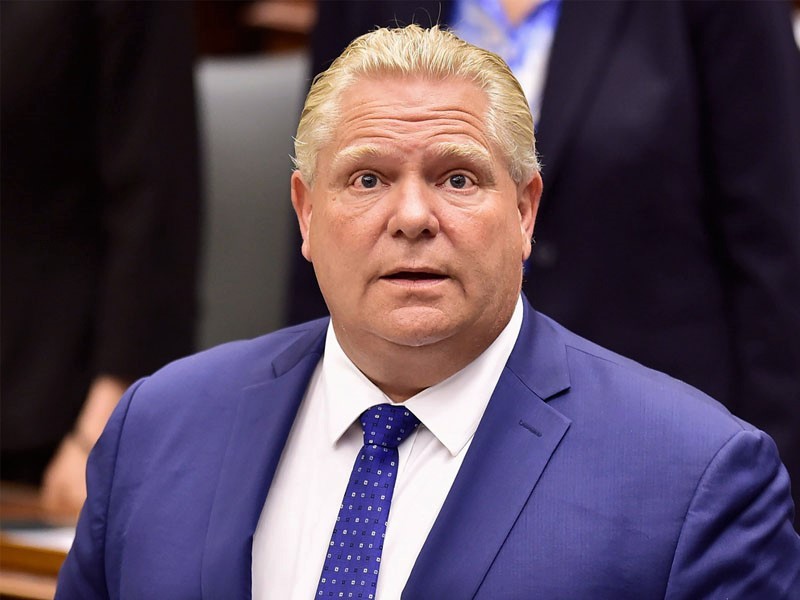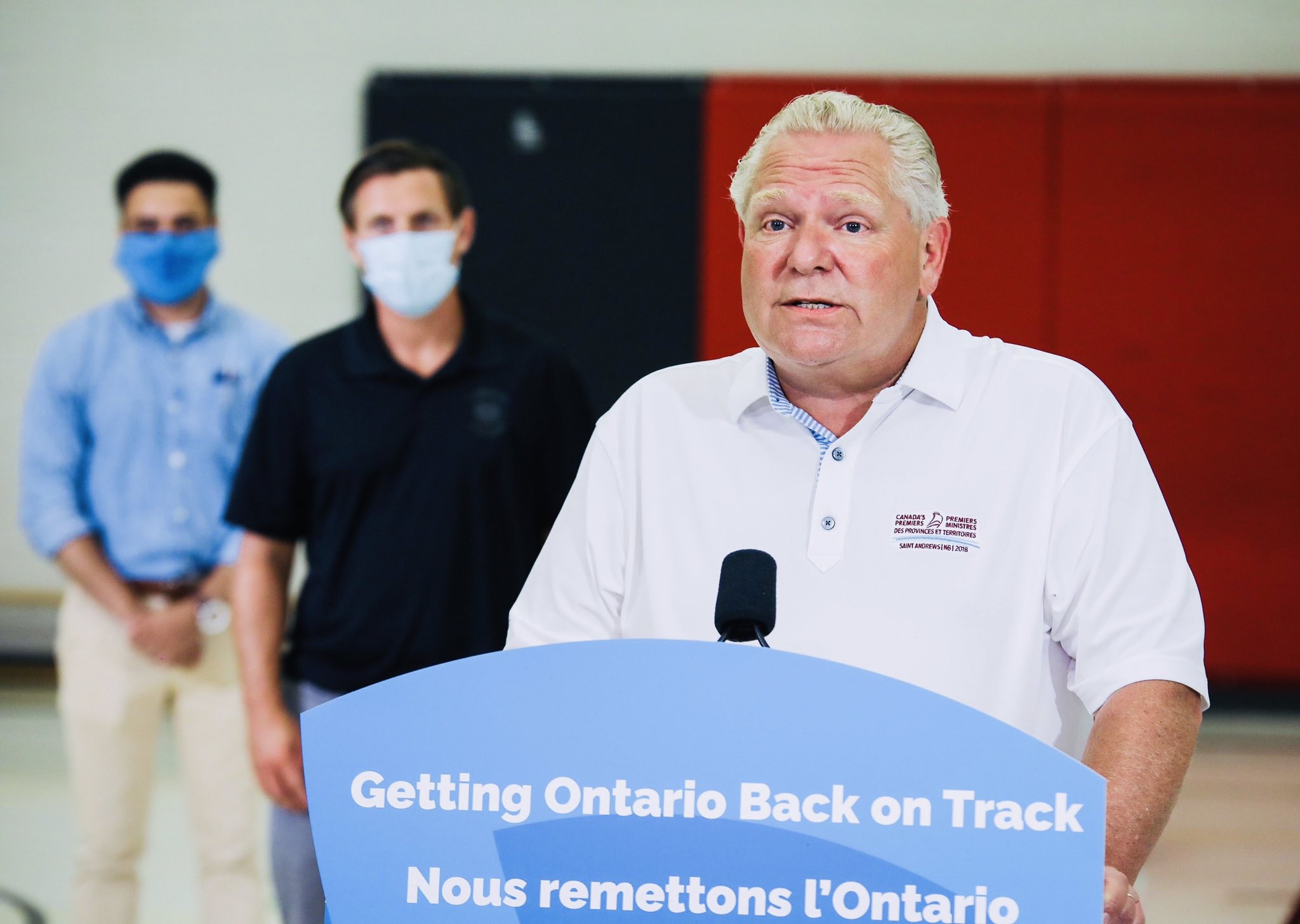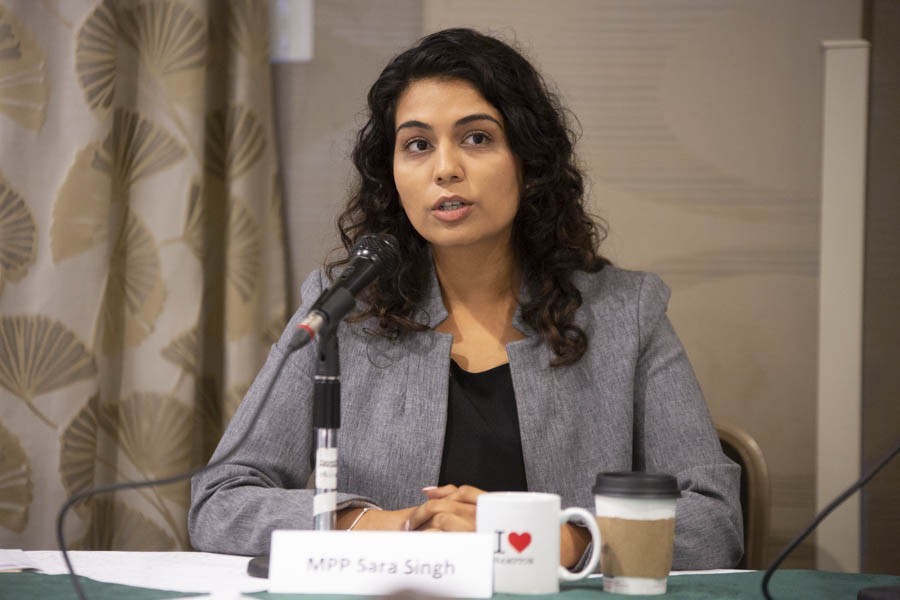
‘A provincial government that harms BIPOC populations by policy decisions’: Doctor expresses frustration after Ford gives Peel peanuts in vaccine pilot
After public health experts and media across North America spent months pointing out the racial and ethnic inequities of the pandemic response during the first wave, which ravaged visible minority communities, Premier Doug Ford walked up to a podium for his daily press conference on September 4.
“Something is broken when you have 3 percent of the population with 40 percent of the cases,” he said, describing the alarming situation in Brampton, sounding surprised and pointing fingers at local officials.
Thanks to Ford and his PC government the city was routinely reporting around a quarter of Ontario’s infections as the second wave hit Brampton weeks before other areas.
Ford and Health Minister Christine Elliott failed to explain why they had neglected Peel, and Brampton specifically, since the start of the pandemic.
Brampton, where almost 80 percent of the population is not white and at a higher risk of developing serious COVID-19 symptoms due to underlying conditions, was given one provincial assessment centre for testing; Toronto had 17.
Despite the highest infection rates in Ontario, the Province refused to provide sustained resources to its fourth largest city. The local public health unit even had to get help from outside Peel to keep up with crucial contact tracing to control the rapid viral spread.
A test positivity rate above 2.5 percent means viral spread in a jurisdiction is not under control. At the height of the second wave, Ontario’s test positivity on January 3 was 5.6 percent. In Brampton, at the end of the same week, the test positivity was 17.6 percent.
The infection rate per 100,000 residents across the whole province had spiked to 134. In Brampton it had skyrocketed to 351.8.
Ford and Elliott had all the updated data. Elliott tweeted out the daily case numbers in Peel religiously, every morning. They were being advised by Ontario’s science table, which routinely told them to concentrate resources and attention on hotspots.
None were hotter than Peel.
But despite acknowledging Brampton was “broken” Ford and his government have continued to ignore Peel.

Despite acknowledging the dire situation in Brampton and much of Peel during the pandemic, Premier Doug Ford and his government have failed to provide adequate resources to the region.
Calls to protect its large essential workforce, mostly visible minorities and many recent immigrants, who have travelled to factories and plants and processing facilities every day to keep Ontario running, have been batted away by Ford, despite his constant claim that he will do anything to keep them safe.
He has refused to provide them with guaranteed paid sick days under provincial legislation, which he had scrapped immediately after his election in 2018.
On Friday, his government added insult to injury.
It announced the rollout of a new vaccine pilot. Peel, the hardest hit region in the province, was left out of the plan.
On Wednesday, after a backlash from some local officials, Peel was added to a new component of the inoculation program for those 60 to 64, but it will get a small fraction of the doses, and will not be part of the larger plan to use more than 300 pharmacies in selected parts of the province, including Toronto.
Dr. Nitin Mohan, a physician epidemiologist and assistant professor at Western University, could not hold back his frustration.
“We’ve known social inequities have existed for quite some time, the disparities have been highlighted. It’s time to question how the decisions are being made. They [the provincial government] don’t seem to be following the science and the evidence. Now, for Peel not to be as highly prioritized in the vaccine pilot rollout is counter to what the evidence indicates. In a world with a true partnership between the Province and Peel imagine the lives that would be saved.”
Mohan previously worked at the Public Health Agency of Canada where as a physician epidemiologist he studied food and animal borne infectious diseases, while also working with the Infectious Disease Prevention Control Branch (IDPCB).
He specializes in surveillance of infectious diseases using coordinated data to prevent medical risks.
Mohan has grown increasingly exasperated over the provincial government’s pandemic response.
“It’s been a very frustrating part of the pandemic. I want to convey my frustration from this side of the pandemic, as an epidemiologist with all the data, and watching decisions being made, it's hard to believe the evidence and data were considered.”
He said if “elected officials don’t reflect our communities” it’s difficult for them to understand what’s happening to residents in places like Peel.
“It’s important to understand that folks have to have trust in the vaccine process, and then if they have trust they will participate in the process. If we’re looking at a provincial government that harms BIPOC populations by policy decisions such as the lack of paid sick leave, then they lose trust in the system, and they lose trust in vaccines at all. It ties in with paid sick leave; these are hard working people, they go to their jobs everyday. When they lose trust because of the government’s policies and when the research and evidence isn’t followed, it impacts everyone when the science isn't followed. It’s mind boggling, it absolutely makes no sense to me.”
On Friday, officials in Brampton, Caledon and Mississauga were dismayed when they found out the pharmacy pilot to distribute more than 194,000 doses of the AstraZeneca vaccine to adults aged 60 to 64 would not include their residents. Instead, the Province elected to give the doses to regions with a less serious pandemic situation than Peel.
Altogether, 325 pharmacies in Toronto, Windsor-Essex and the Kingston, Frontenac, Lennox & Addington region will participate in the soft launch of the AstraZeneca vaccine, after 500,000 doses arrived from India last Wednesday. Of those, 194,500 have been sent to Ontario.
The decision to exclude Peel from the rollout blindsided the Region’s top doctor, Lawrence Loh, who was told his residents wouldn’t get the AstraZeneca vaccine at the same time the public heard.
Mississauga Mayor Bonnie Crombie was more blunt.
“We were disappointed, we should have been included in the soft launch, we’re one of the hotspots,” she told The Pointer Friday, shortly after General Rick Hillier’s announcement.
By Tuesday night, Crombie signalled hope that Peel would see a significant benefit from the pilot plan.
But when the details arrived at an early afternoon provincial press conference Wednesday, residents were disappointed. Instead of retroactively including Peel in its pharmacy pilot, a new program was launched. Peel Region will be one of several areas included in a pilot for primary care providers to administer vaccinations.
Of the 194,500 AstraZeneca doses, 29,500 have been separated out and will be administered by physicians and primary care providers in Hamilton, Toronto, Guelph, Peterborough, Simcoe-Muskoka and Peel. The remaining 165,000 doses will go to the original pharmacy pilot which does not include Peel.
It is unclear how the 29,500 primary care doses will be distributed, but if they are evenly shared between the public health units, Peel would receive only 4,917 doses. According to the 2016 Census, the region was home to 75,560 residents between 60 and 64-years-old at the time.
Questions also remain about how physicians will be selected and how they will decide which patients to call. Peel Public Health was unable to confirm which primary care providers in Peel would be handing out the region’s limited AstraZeneca allocation.
“Family physicians know their patients better than anyone and they understand who needs it a lot sooner than other patents and I think they’ll do a great job,” Ford said Wednesday, offering no details of the decision process.
The Ministry of Health did not respond ahead of publication to questions asking how many AstraZeneca doses would flow to Peel, why Toronto was included in both pilots and why Brampton, Caledon and Mississauga were not being prioritized despite Elliott’s earlier comments about focussing on population and risk.
“Leaving Peel out of the pilot vaccine rollout in pharmacies only adds to the inequities exposed by COVID,” Brampton MPP and NDP Deputy Leader Sara Singh told The Pointer. “The pandemic has hurt racialized communities disproportionately, and that’s true in Brampton, where essential workers have to leave their homes to do the kinds of jobs that keep food on our grocery shelves, care for our loved ones, and keep deliveries moving.”
She echoed what many others in the city have said for months.
“Despite high infection rates locally, the Ford government has ignored Brampton’s needs time and again. We need more busses with less crowding. We need more in-school and in-workplace testing. We need paid sick days. Sending resources to hotspots saves lives and stops the spread. Not only is leaving Brampton and Peel behind inequitable — it’s prolonging this pandemic for everyone.”

Brampton MPP and NDP Deputy Leader Sara Singh
Some Mississauga residents are also expressing similar concern.
“It would be great if this is meaningful, but it just isn’t,” Jill Promoli, an illness prevention campaigner and Ontario Liberal candidate for Mississauga-Streetsville, told The Pointer. “Our whole situation has been so frustrating here in Peel through the whole pandemic and I just keep waiting, thinking, ‘how can they possibly do so little in a situation where we’ve been on fire for a year now?’”
Elliott made the situation more confusing during the Province’s press conference Wednesday. Responding to a question about Thunder Bay, she said vaccines are distributed based on the number of people living in an area and how high their risk of infection is. Peel Region has maintained the highest per-capita rate of infection in Ontario throughout most of the pandemic and has the largest population outside Toronto.
Jill Promoli, Ontario Liberal candidate for Mississauga-Streetsville
“What we’ll be dealing with in terms of the allocation of vaccines is going to be on the basis of population size primarily, but also based on risk,” Elliott said, describing the pilot programs which appear to contradict her claims.
Crombie and Dr. Lawrence Loh, Peel’s medical officer of health, tried to put a positive slant on the situation, embracing the small number of doses Peel will receive. Brampton Mayor Patrick Brown also welcomed the news that eight primary care providers in Peel will be administering some Astrazeneca vaccines, calling the decision “terrific”.
At her weekly press conference, shortly after the provincial presser, Crombie’s positivity waned. Asked if the Province’s eleventh-hour consolation prize was good enough, Crombie conceded it was not. “I guess the answer is no,” she said. “It’s very unfortunate that we weren’t considered to be part of the other pilot, I’m not sure why that decision was made.”
Mississauga Centre MPP Natalia Kusendova described the region’s allocation of AstraZeneca vaccines as “incredible news” in a tweet Tuesday night.
Unlike Peel, the City of Toronto has been included in both pilots, receiving doses to distribute through pharmacies and primary care providers. A total of 224 pharmacies in the city will be administering the Astrazeneca vaccine to adults 60 to 64-years-old, as well as the yet to be announced primary care clinics.
Data maintained by Queen’s Park shows the rate of COVID-19 per 100,000 residents in Peel has been consistently higher than in Toronto. During both the first and second wave, Peel suffered significantly more per-capita cases than Toronto, something Loh and others have attributed, in part, to the high number of residents who work in frontline and essential jobs.
“There was the spin from the Premier last summer suggesting that all of Peel’s numbers were because people were behaving irresponsibly,” Promoli said, referencing comments made by Ford several times during the summer slamming Brampton for a string of large parties. “I thought that did a real disservice to the people of Peel who have worked so hard through this whole situation.”
Despite the data and public concern, Queen’s Park has done little to help guarantee extra vaccine supplies will be sent to help put the fire out in Peel.
“Today’s announcement further underlines our commitment to make vaccines available to Ontarians as quickly and efficiently as possible,” Solicitor General Sylvia Jones, who represents Peel Region at Queen’s Park as the PC MPP for Dufferin-Caledon, said. “Opening up new channels to deliver the vaccine, through trusted health care partners like pharmacies and primary care providers, will enable us to reach even more people and we appreciate the effort to help make this happen.”
According to Loh, the Province did not consult with him before the decision was made to not include Peel in the pharmacy pilot and no explanation was offered when he asked after it was announced. “I did reach out when I was advised about the three areas and communities that are in the [pharmacy] pilot and I was just advised that that was a decision that was taken at the time,” he said.
The Region plans to have 500,000 doses administered a month starting April. This will be hard to achieve if expected supplies do not arrive as planned. Loh stressed several times Wednesday that he hoped to see more vaccines arriving in Canada so discussions over the allocation of scarce resources could be a “thing of the past”.
Singh said the decision to leave Peel out of the pharmacy pilot was “extremely upsetting”.
“Primary care physicians can play an important role in the vaccine rollout, but they’re going to need a lot more doses than the few they’re getting to put the end of the pandemic within sight in Peel.”
Email: [email protected]
Twitter: @isaaccallan
Tel: 647 561-4879
COVID-19 is impacting all Canadians. At a time when vital public information is needed by everyone, The Pointer has taken down our paywall on all stories relating to the pandemic and those of public interest to ensure every resident of Brampton and Mississauga has access to the facts. For those who are able, we encourage you to consider a subscription. This will help us report on important public interest issues the community needs to know about now more than ever. You can register for a 30-day free trial HERE. Thereafter, The Pointer will charge $10 a month and you can cancel any time right on the website. Thank you.
Submit a correction about this story


